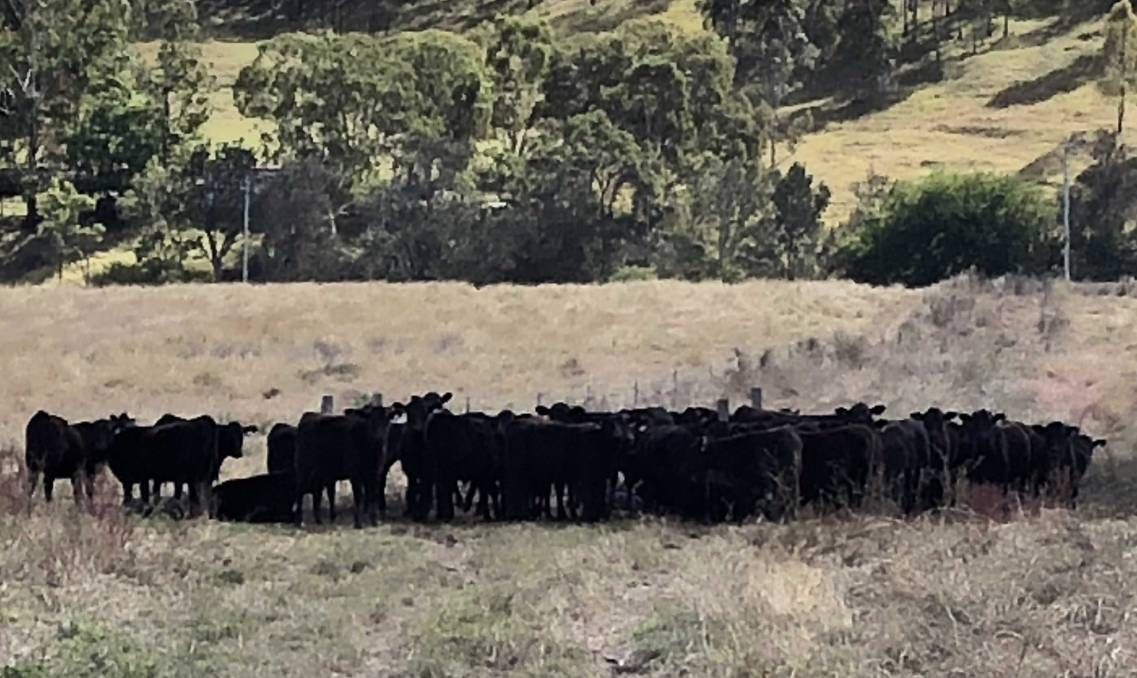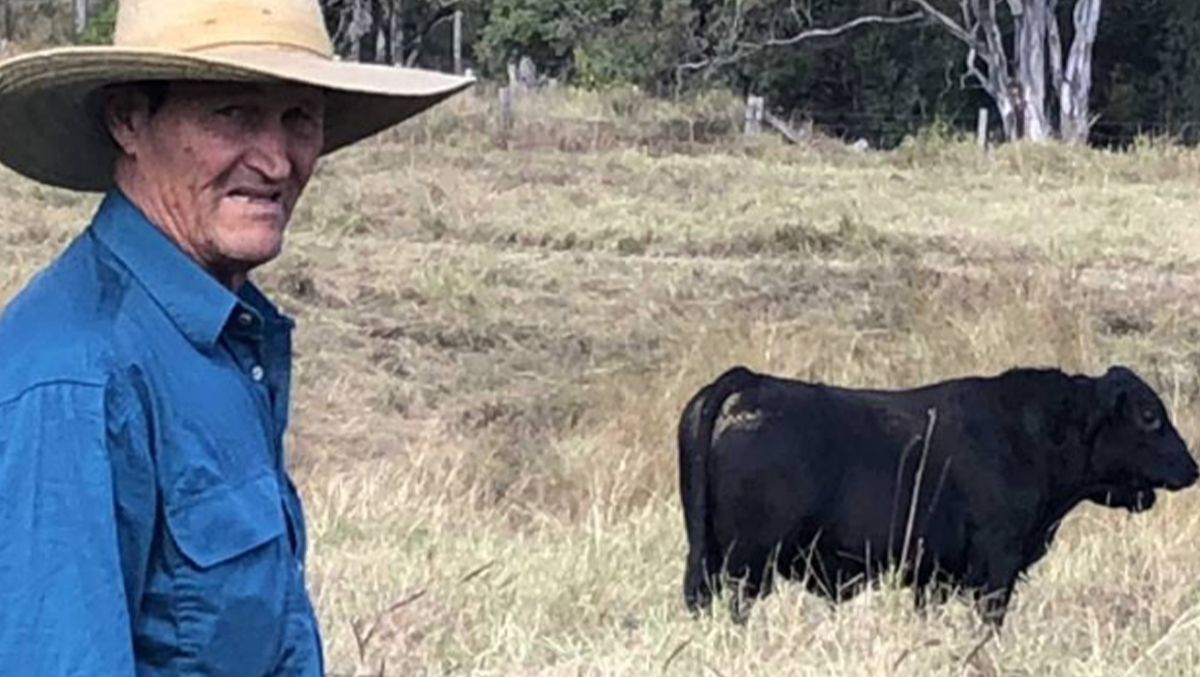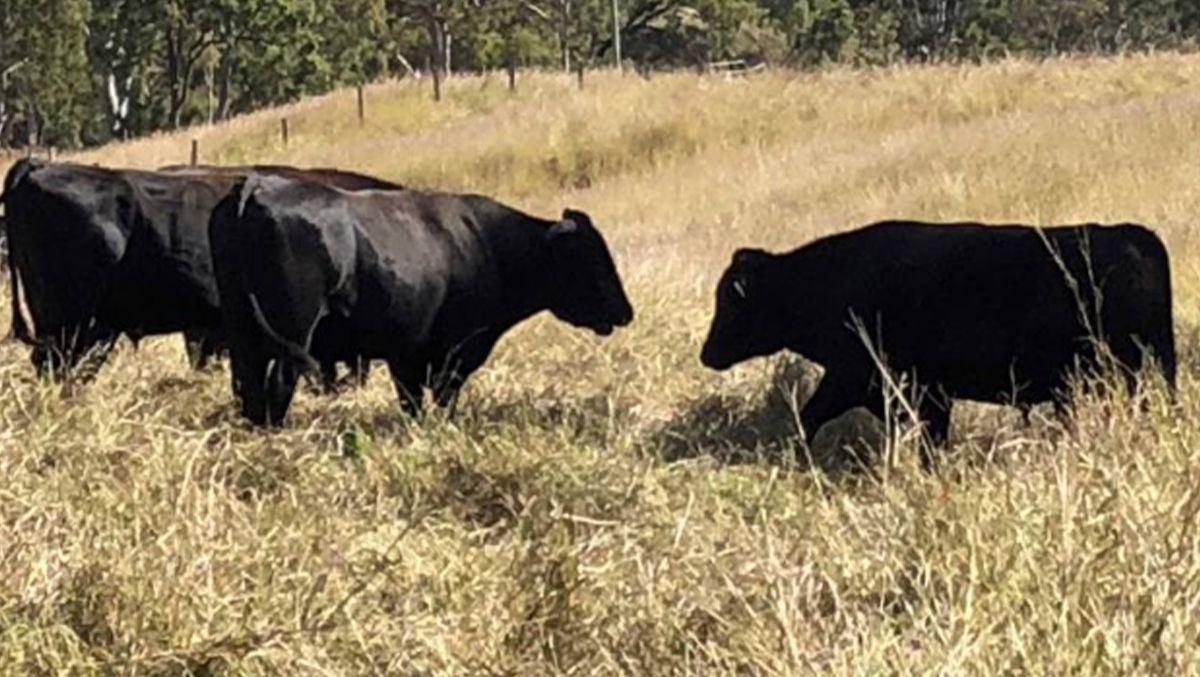
MANAGING JUST FINE WITH ANGUS AT BEAUDESERT
It has been five years since the Franklin family successfully introduced Angus genetics into the commercial cattle business they manage for their next door neighbour, Andrew Brice, on Lockerbie, at Beaudesert, in the Scenic Rim region of Queensland.
Pure Angus objective: The Franklins have been purchasing Angus bulls for the past five years, with the long-term objective of creating a purebred Angus herd.
It has been five years since the Franklin family successfully introduced Angus genetics into the commercial cattle business they manage for their next door neighbour, Andrew Brice, on Lockerbie, at Beaudesert, in the Scenic Rim region of Queensland.
Chris and Christine Franklin have been managing operations across the 1700 hectares on Lockerbie for 10 years. The mainly scrub soil and ironbark country lies on undulating and steep land, which receives an average annual rainfall of 889mm.
"We've received more than half of that amount to date this year, which is above average through that span. The country looks excellent," Mr Franklin said.
While they basically destocked entirely in 2019 in the drought, they're gradually rebuilding the pure Angus, Angus-Wagyu first-cross and pure Wagyu programs.
"We brought in Angus females to join with Wagyu bulls to produce first-cross progeny," Mr Franklin said.
"We're really only getting into it for our second year now post-drought.
"We're running about 150 Angus cows with three Wagyu bulls. The first-drop calves have been very impressive. We weaned 40 recently and at least 20 weighed between 280 kilograms to 350kg straight off their mothers.
"Their weight gains were certainly helped by the good season. The cows were just pregnancy tested again and came back with a 90 per cent conception rate. So, we're eager to see how the second-drop calves perform."
For the past four years, the Franklins have also been purchasing bulls from John and Bev Cochrane, Cochrane Angus, with the long-term objective of creating a purebred Angus herd.

Solid progeny: Chris Franklin is seeing good growth rates and weight gains in his Angus calves.
"We're joining close to 150 crossbred Angus cows with three Cochrane bulls," MR Franklin said.
"The bulls are docile and easy to manage. We've had two drops to date through two of these bulls, the other bull is quite young and was only recently purchased. So, we'll have our first calves from him later this year.
"The calves produced to date have uniformly had low birth weights and very high growth rates. We're very happy with them. The Cochranes have gone out of their way to help us. John certainly knows a lot about the breed. We'll likely buy a bull out of their paddock this year."
Mr Franklin said, depending on rainfall in spring, all bulls are joined with the females in October and brought out of the paddock in December.
RELATED READING:
- Sustainability key to raising quality, grass-fed beef at Tarwin Lower
- Angus Youth inspires industry's next generation
"We strive to get the resulting progeny to 320 to 350kg for entry into the feedlots," he said.
"We ring around and find where the better prices are at the time and send that way. We aren't beholden to one particular feedlot. As has been the case with just about all commercial cattle sales lately, we've been receiving very good returns."
Mr Franklin said another long-term goal was to enter steers into feedlot trials.
"We'll look at getting into that when we develop the programs more," he said.
"It's always good to gauge where you are with the article you're producing. For now, we're focusing on slowly rebuilding the overall herd and keeping an eye on how the first-cross program goes."
Fertile: Angus cows on Lockerbie were recently pregnancy tested again and came back with a 90 per cent conception rate.
The Franklins were running a Bos indicus herd before introducing black cattle.
"Ticks and flies are an issue we have to manage closely with the Angus and Wagyu," he said. "But the growth rates and weight gains are seeming a lot better than what I was getting out of the Bos indicus. We find the trade-off to be worthwhile."
Mr Franklin said they were trying to rebuild the Wagyu herd as well.
"We started the pure Wagyu program about four years ago," he said.
"Andrew got into them 10 years ago, but found there wasn't a large enough market for them then.
"When he got out of them, there were a lot of embryos left over that we now use."
Follow Us
575 Stockleigh Road
Jimboomba, QLD 4280

